I asked a friend with contacts to the MAME team, who reported back that nobody really knew what it was, and nobody really seemed to be interested.
Of course, I had to buy it and figure out what it actually is. The seller only identified it as a SEGA CGAL MEDAL VIDEO BOARD, and no part numbers seemed to exist on google.
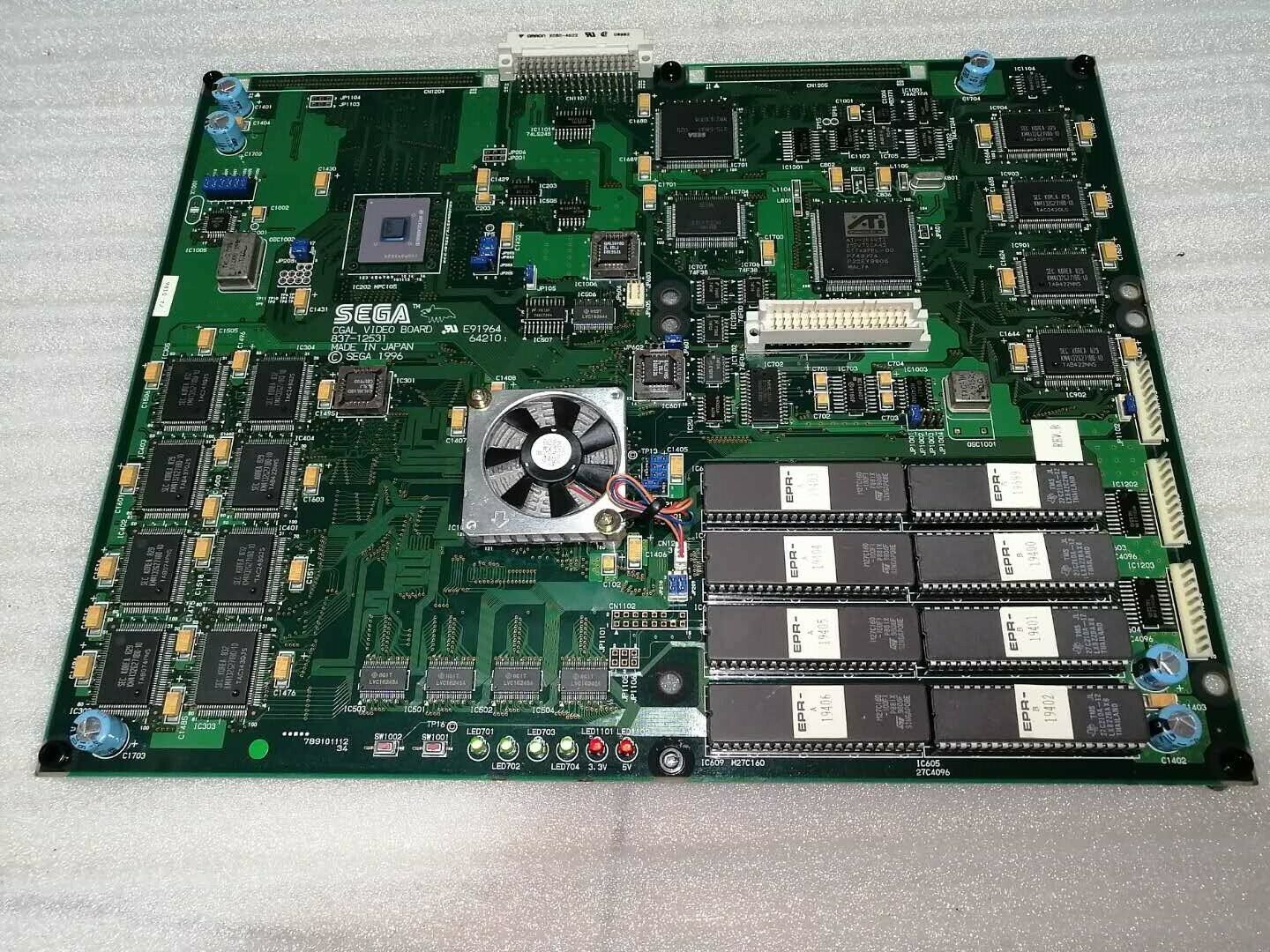
Somehow the seller knew that it came from a medal game. "Medal" games in Japan seem to be any game that operates based on tokens converted as a proxy for real money, enabling gambling, betting and other normally forbidden activities.
I think this might also include claw games as well as other interactive games that don't necessarily have a video display.
The first thing that stuck out to me was the unique ceramic BGA package for the MPC105 PowerPC-to-PCI bridge that is also used on the Model3 platform. Seeing that informed me that this board definitely contains a PCI device(s), and possibly the CPU as well, though I wasn't too certain (it is labeled as just a video board!) However the bus one would expect to connect to this bridge chip doesn't seem to go anywhere - the Omron b2b connectors on the top are not populated.
The other thing is the ATI video chipset. I couldn't quite make it out, but in 1996, ATI did not have any real 3d chipsets, so it had to be a most likely PCI 2d accelerator.
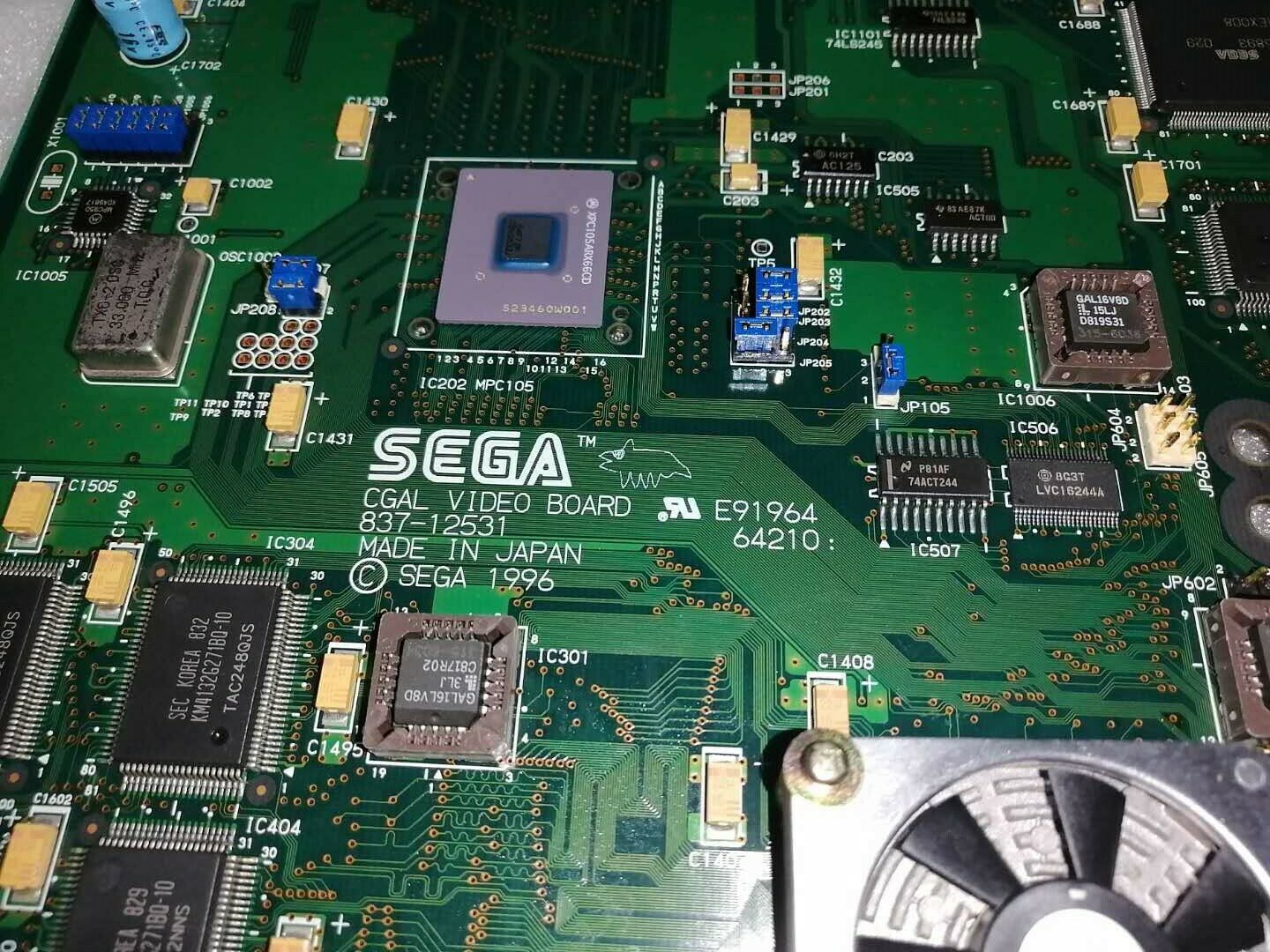
Funny how there seems to be a little animal drawing on the pcb. Of course, it makes perfect sense now that I know what it is... But first...
After receiving the PCB, i took off the heatsinked part.... And it is a 66MHz PowerPC 603e! And after looking closer at the PCB in person, I realized that several major portions of the Model3 design were lifted for this board:
1. PowerPC cpu
2. MPC105 pci bridge
3. 64bit ROM program bus with 3.3 to 5v level translators and bus terminators
4. 33mhz base clock oscillator based on Motorola clock driver
5. Sega custom PCI to I/O asic
6. Sega custom serial communications asic
It's very likely that the very same design team working on the Model3 also cranked this one out, as the PCB design is extremely similar.
The CPU has 16mbytes of SGRAM while the ATI Mach64 2d graphics chipset has 8mbytes.
At this point I figured that it must provide a video display with basic 2d elements, no audio, and minimal controller/io interaction, with a heavy emphasis on serial data transmission.
Looking at medal games from 1995 to 1998, I was 95% sure this board is from Royal Ascot 2, which is a horserace betting game. Up to 8 or so people are seated in a circle around a small tabletop racetrack, each person has a TV display with their own stats and some basic controls to place bets and manage position. Each of these units would essentially act as a thin client, networked to the host system.
https://www.youtube.com/watch?v=VhoVXmfB4cg
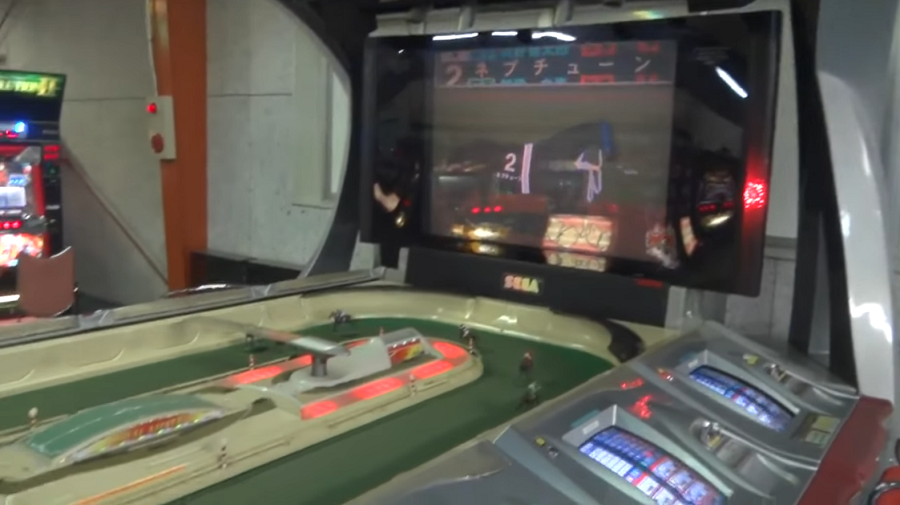
The main screen displays a 3d live track visualization, whose graphical fidelity seems to indicate a Model2 platform with up to 3 units linked for the large DX models. These model2 stacks are probably the slave to the main host platform. Who knows what that would've been.
Looking up parted-out Royal Ascot 2 boardsets, I think I found the unit that this "video" board plugs into:
https://www.highway.net.au/arcade-parts ... 534-1.html
Hopefully Highway Arcade does not mind me rehosting a couple images of the unit itself:
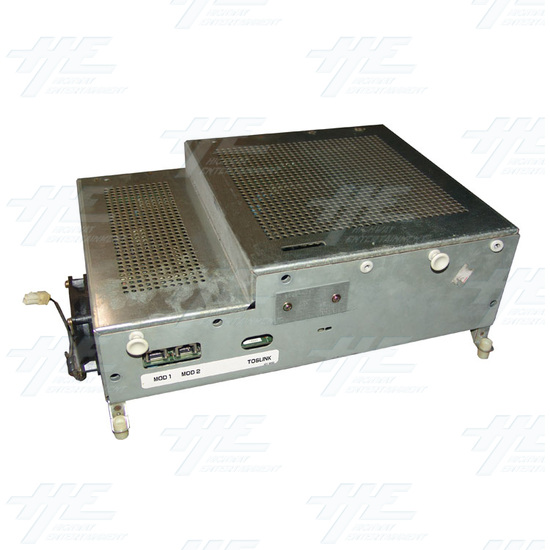
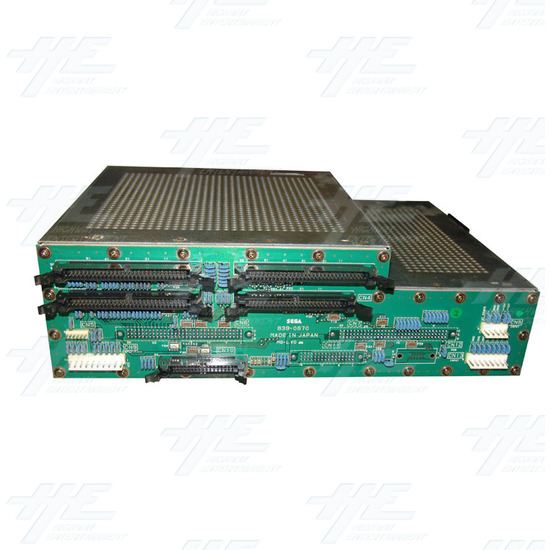
This boardstack generates analog video which is externally amplified, serial communications over Toslink just like model 2/3, what looks like a couple RJ-45 ports? And a good deal of I/O on the back. No idea what that I/O is, maybe these board stacks directly drive the little horse animatrons.
Looking at the location of the DIN connectors (the 3x~30 white connectors) it appears this "video" board sits in the lower portion of the stack. An unpopulated DB15 for rgb out is right next to it.
There is a substantial board located directly above the video board in the stack - see it has 2 large DIN connectors. Plus, if you look at near the ATI chipset on the video board, it seems to plug directly into it. I think this is UART and some other stuff, not video.
Well, this is enough speculation. I picked up a Xeltek programmer and dumped all the eeproms. There are two banks:
512KB PowerPC bootloader+program
8Mbyte graphics data
Using a little CROM de-interleaver I wrote for Model3, I assembled all the files into a flat binary. Looking at the executable, it does indeed confirm that this is a horse betting game.
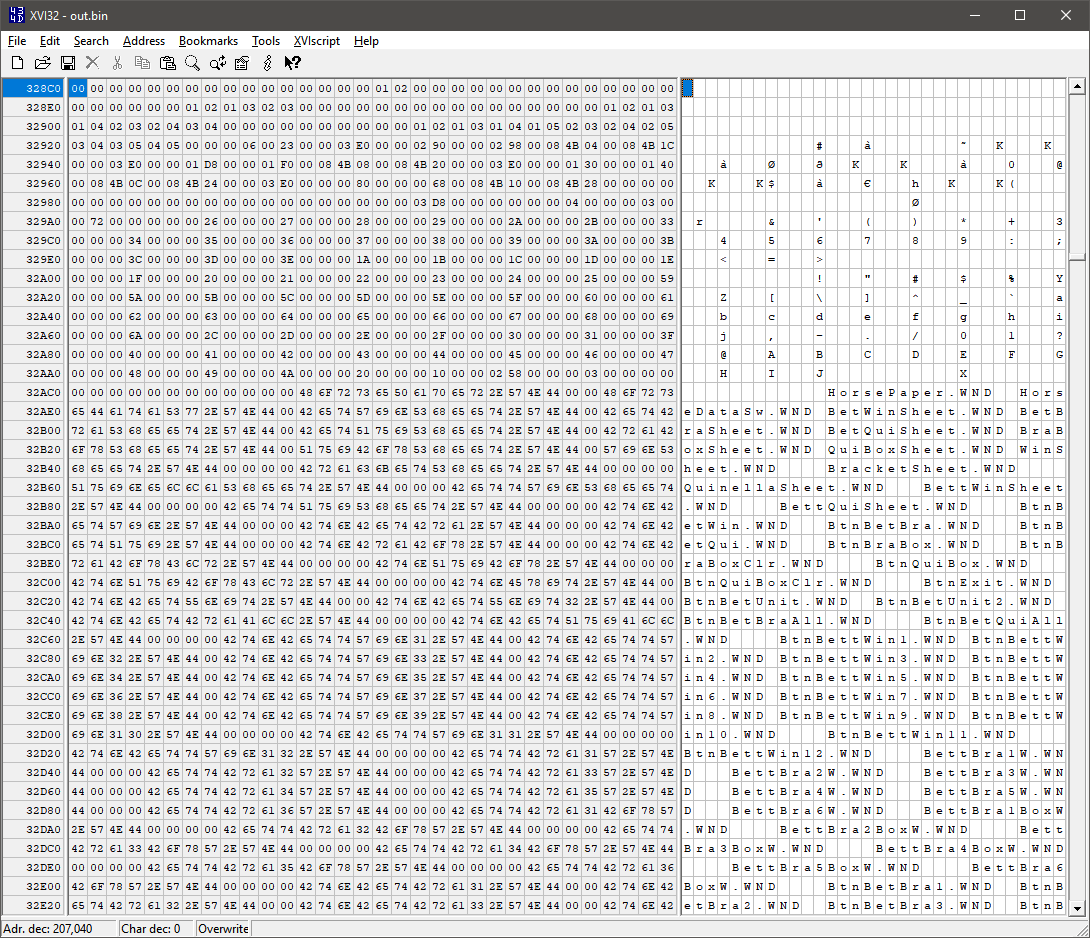
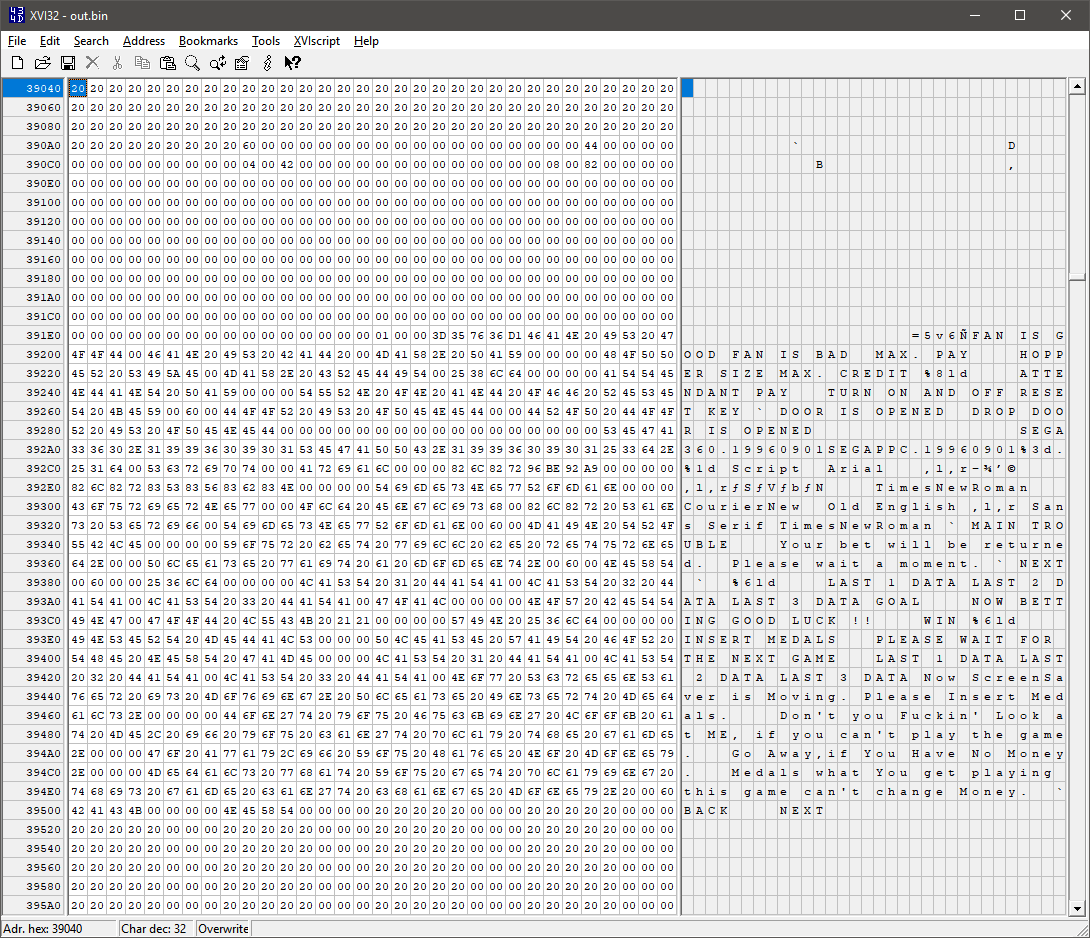
The graphics data appears to be largely 8bit palettized graphics.
Anyway, that's the end of my speculation and easter egg hunt. If anyone wants to tell me where to direct my rom files, please let me know. It could probably even be emulated in Supermodel if you added a stub to handle the ATI chipset as a PCI device, which doesn't look very complex. I will try and power up the board later on, though I expect it will simply display an error message like "Waiting for master..." or some such. Would be fun to extract the graphics from it as well.